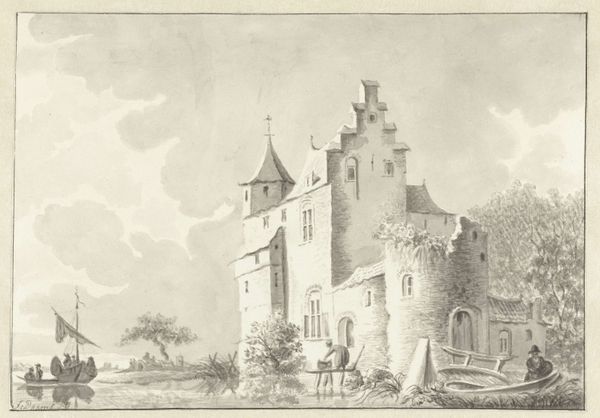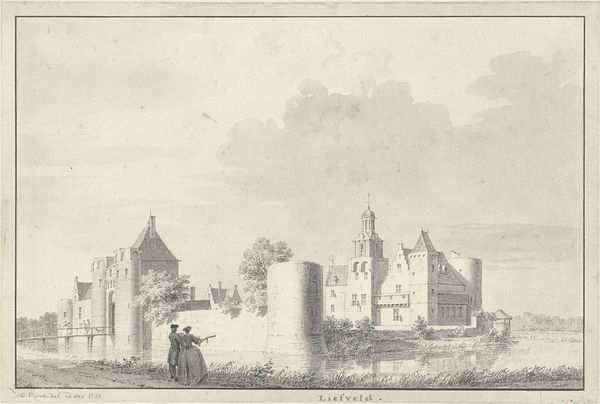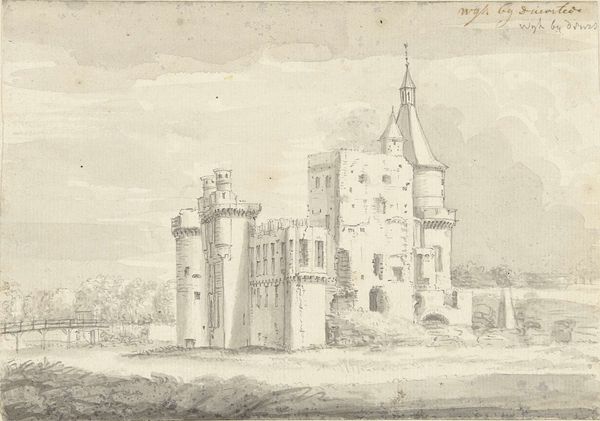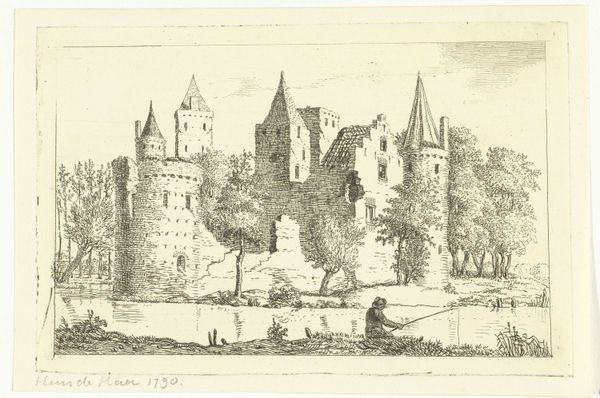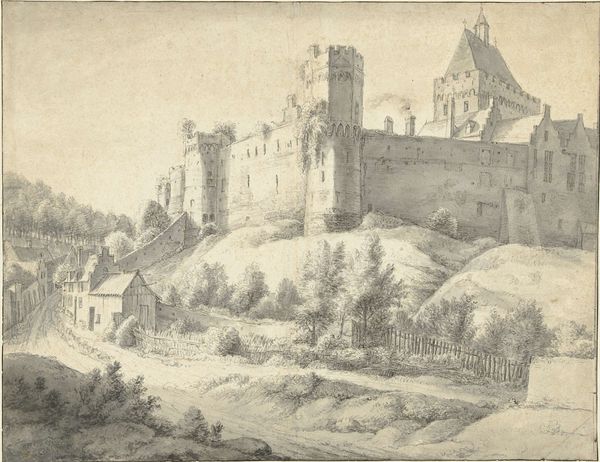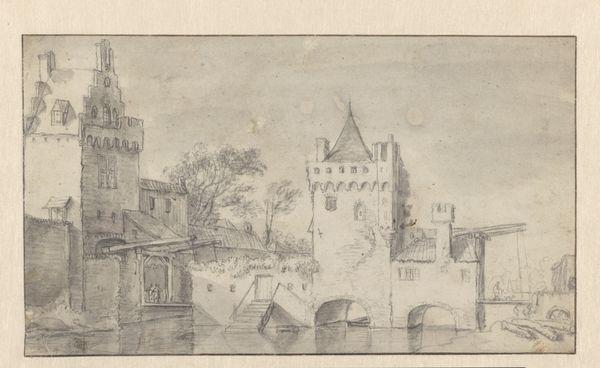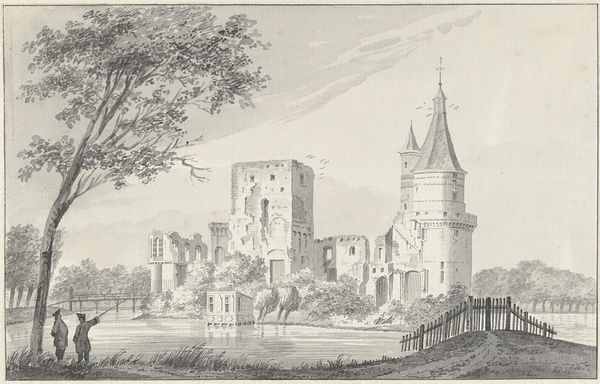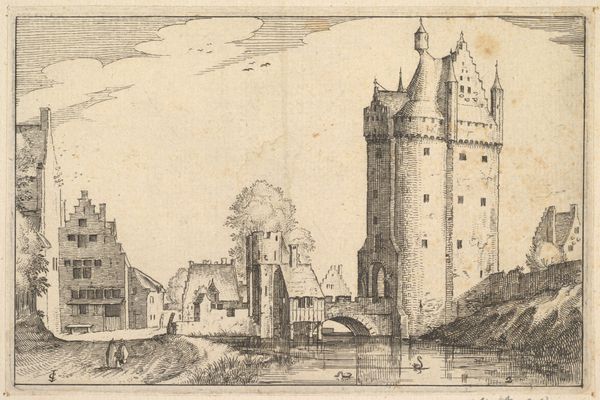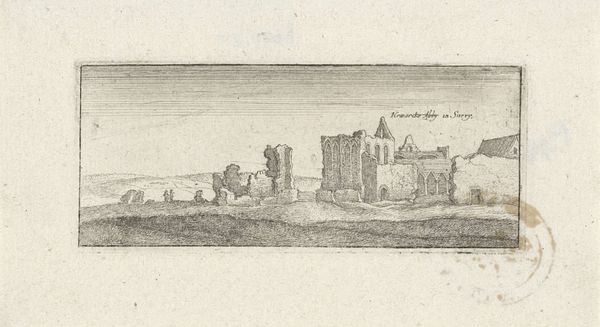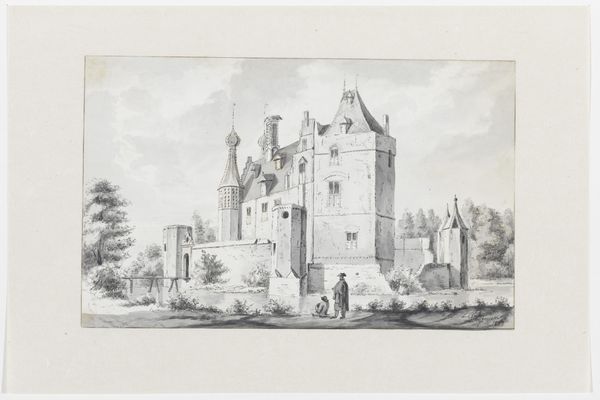
drawing, paper, ink
#
drawing
#
baroque
#
pencil sketch
#
landscape
#
paper
#
ink
#
pen-ink sketch
#
cityscape
Dimensions: height 174 mm, width 268 mm
Copyright: Rijks Museum: Open Domain
Curator: This detailed drawing captures "Het Huis te Schagen," a structure rendered in ink and pencil on paper by Abraham de Haen the Younger in 1729. Note its present location at the Rijksmuseum. What are your immediate thoughts on the composition, Editor? Editor: Immediately, a sense of serenity. The soft grayscale palette creates an almost dreamlike quality. It prompts reflection on who lived here, and how their lives contrasted with those beyond its walls. Curator: Precisely. The architectural rendering is remarkably detailed. Observe how De Haen employs varied line weights to suggest depth and texture. The composition leads the eye from the bridge to the main tower, a study in verticality against the flat plane of the landscape. Editor: While I agree with your assessment, the image invites questions beyond mere aesthetics. Who commissioned this piece, and what was its purpose? Was it merely documentation, or a celebration of power, illustrating the divide between the privileged and the laboring class that built and sustained it? Curator: A fair point. However, the delicate linework transcends pure function. Consider the intricate rendering of the water reeds in the foreground. Semiotically, it acts as an anchor, but it is formally brilliant. Editor: Indeed, though I interpret that foreground less as an anchor, and more as a signifier of the land and its inhabitants before colonization. This building looms. I would also be very interested in examining other documents and literature to see the way country houses, landscapes, and country life get painted during this time period, especially those rendered in more valorizing terms. It is important to historicize what is rendered. Curator: An astute observation, the sociopolitical undertones, which, I cannot argue with, do add depth. Looking closer at the distribution of light and dark—particularly around the castle walls—the contrast seems deliberately deployed. Editor: It underscores that visual language has political agency, intentionally or not. It begs us to understand it with scrutiny. Curator: Indeed, a dialogue between structure and society greatly enriches our understanding. Editor: A necessary discourse if we wish to confront art and its significance throughout time.
Comments
No comments
Be the first to comment and join the conversation on the ultimate creative platform.
